There is some debate on the turning point of the war in the Pacific Theatre. Some historians believe the Allied victory at the Battle of Midway was the defining moment, followed by aggressive island-hopping all the way to the Japanese homeland. Others view Midway as the tipping point in the war where the initiative hung in the balance only to swing toward the Allies following its major victory in the Guadalcanal campaign. According to many other historians, however, the turning point of the war in the Pacific resulted from the two battles combined. They point out that the Battle of Midway inflicted such permanent damage on the Japanese Navy that when the Battle of Guadalcanal began two months later, they did not have enough resources to hold onto the island or to take it back once the U.S. Marines had landed. Together, these two victories ended major Japanese expansion in the Pacific, allowing the Americans and its allies to take the offensive.
Japanese Expansion Before Midway and Guadalcanal
In the months following the attack on Pearl Harbor in December 1941, the Japanese drove the Americans out of the Philippines, Guam and Wake Island; the British out of British Malaya, Hong Kong, Singapore, and Burma; and the Dutch out of the East Indies.

The Japanese then began to expand into the Western Pacific, occupying many islands in an attempt to build a defensive ring around their conquests and threaten the lines of communication from the United States to Australia and New Zealand. Emboldened by its rapid and successful victories, the Japanese high command prepared to deal one more decisive blow to the U.S. Naval forces in the Pacific by destroying the U.S. aircraft carriers that had escaped the surprise attack at Pearl Harbor and to occupy Midway; a tiny but strategically important island nearly halfway between Asia and North America that was home to a U.S. Naval Air Station.
The Japanese also intended to occupy Midway as part of an overall plan to extend their defensive perimeter in response to the Doolittle air raid on Tokyo. This operation was also considered preparatory for further attacks against Fiji, Samoa, and Hawaii itself.
Intelligence Wins the Battle of Midway and Guadalcanal
Admiral Yamamoto Isoroku, Japanese fleet commander, hoped to draw out the American fleet, calculating that when the United States began its counterattack, the Japanese would eliminate the United States as a strategic power in the Pacific, giving Japan a free hand in establishing its superiority over other Asian races in a program known as the Greater East Asia Co-Prosperity Sphere. The Japanese also anticipated that another demoralizing defeat would force the U.S. to capitulate in the Pacific War and thus ensure Japanese dominance in the Pacific.
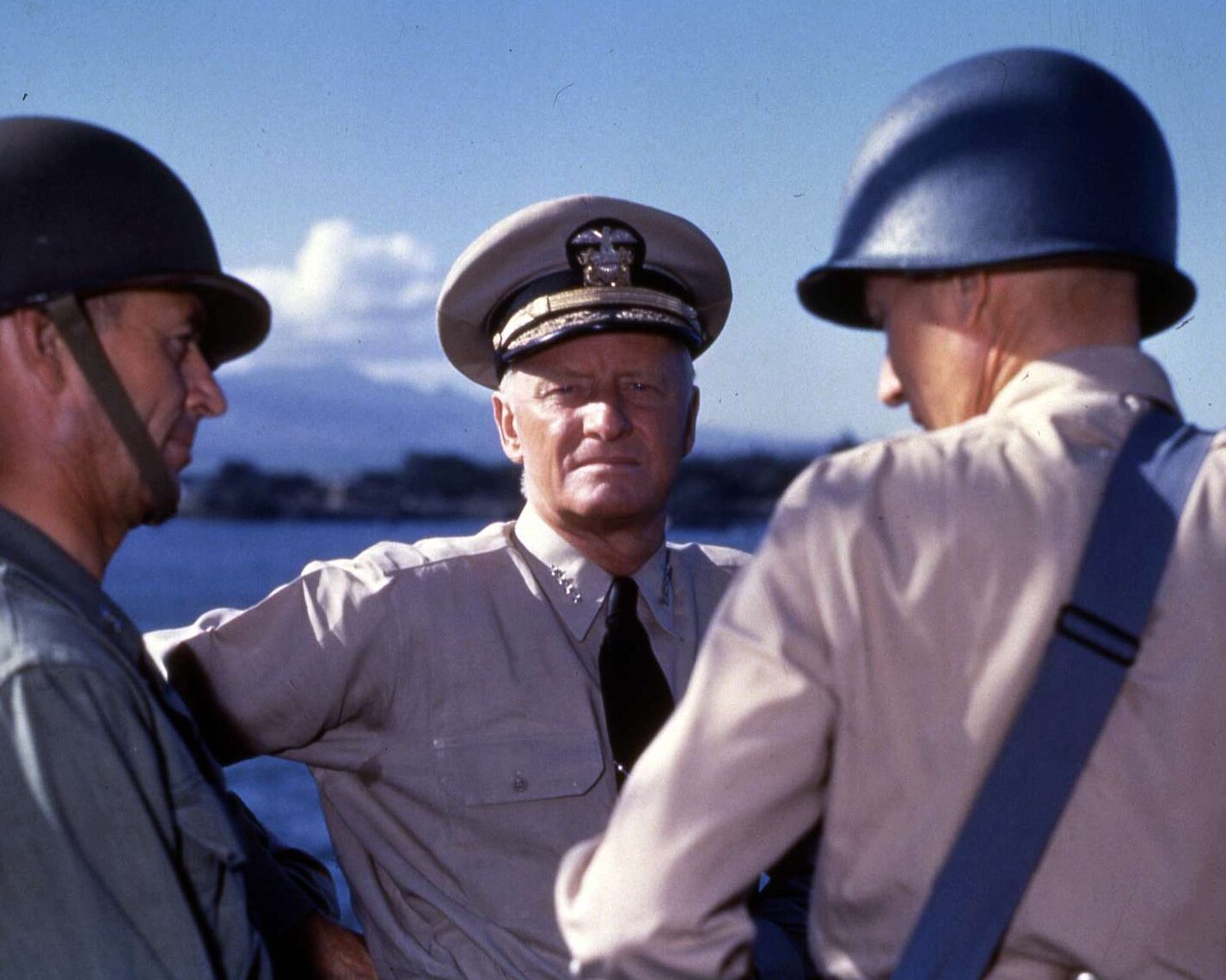
Instead, and unknown to Japanese planners, American intelligence had broken the Japanese fleet codes, enabling Pacific Fleet Commander Admiral Chester W. Nimitz to pinpoint the date and location of the attack allowing him to prepare his own ambush by placing available U.S. carriers in position to surprise the unsuspecting Japanese.
Battle of Midway and Guadalcanal Change the Pacific War
On June 3, 1942, the crucial and decisive naval Battle of Midway began and since the two adversaries were never within sight of each other, all attacks were carried out by carrier-based or land-based aircraft. Over the next five days, aircraft launched from Midway Atoll and from carriers of both navies flew hundreds of miles, dropping torpedoes and bombs and fighting one another in the skies.
By June 7, 1942, victory belonged to the Pacific Fleet which had inflicted devastating damage on the Japanese fleet that proved irreparable, solidly checking Japanese momentum.

The Americans sank four fleet carriers – all part of the six-carrier force that had attacked Pearl Harbor six months earlier. They were the Akagi, Kaga, Soryu, and Hiryu, with 322 aircraft and over five thousand sailors. The Japanese also lost the heavy cruiser Mikuma. At the end of several days of fighting, the Japanese Navy suffered 3,057 deaths. American losses included the sinking of the USS Hornet aircraft carrier, the USS Hamman destroyer and the downing of 147 aircraft resulting in 307 deaths total.
The Allies’ overwhelming victory at Midway paved the way for the landings on Guadalcanal just two months later and the prolonged attrition of the Solomon Islands campaign, both of which finally allowed the Allies to take the strategic initiative and move onto the offensive for the rest of the Pacific War.
Guadalcanal – a 2,500-square-mile speck of jungle in the Solomon Islands – lies to the north-eastern approaches of Australia. Though it is a humid and jungle-covered tropical island, its position made it strategically important for both sides. If the Japanese captured the island, they could cut off the sea route between Australia and America. If the Americans controlled the island, they would be better able to protect Australia from the Japanese invasion and they could also protect the Allied build-up in Australia that would act as a springboard for major assaults against Japanese installations elsewhere in the Pacific.

Fierce Fighting Defines Guadalcanal’s Battle
Although both the Japanese and Americans understood occupying Guadalcanal was critically and strategically important, it was the Japanese that got there first on June 8, 1942. Their goal was to build an airfield at Lunga Point and artillery positions in the hills nearby to protect the airfield. By August, 8,400 Japanese troops were on the island with more arriving each week.
On August 7th, the 1st Marine Division achieved complete tactical surprise when they landed on Guadalcanal, supported by the most powerful amphibious force ever assembled: three carriers providing air support – the USS Saratoga, USS Wasp, and USS Enterprise. The rest of the task force consisted of the battleship USS North Carolina and 24 other support ships. Five cruisers from America and Australia guarded the actual landing craft that gathered off of Tenaru on Guadalcanal. Expecting major Japanese defense, they found nothing.
As they advanced inland towards Lunga Point where the airfield was being built, the island’s hot and humid jungle climate quickly took its toll on Marines carrying heavy equipment. The climate also did a great deal to affect radios and radio communication between those advancing inland and those on the beach. Regardless of these issues, the Americans made no contact with the Japanese and for the first 24 hours, there was no fighting on Guadalcanal.
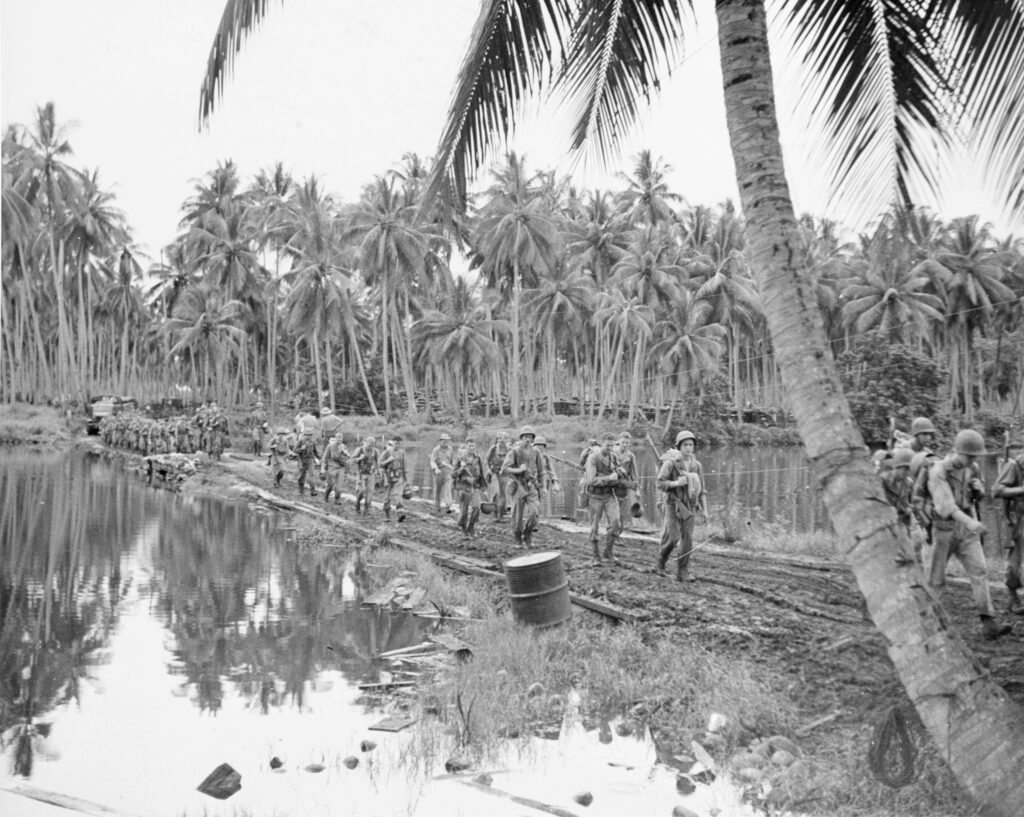
However, though the first 24 hours on Guadalcanal were relatively painless for the Americans, this was not so for the Marines who landed at nearby islands that lay to the north of Guadalcanal: Tulagi, Gavutu and Tanambogo. The Americans needed to control these as this would allow them to oversee the Nggela Channel that separated Guadalcanal from Florida Island, north of it. The landings were fiercely resisted by the Japanese Navy troops who, outnumbered and outgunned by the Allied forces,fought and died almost to the last man.
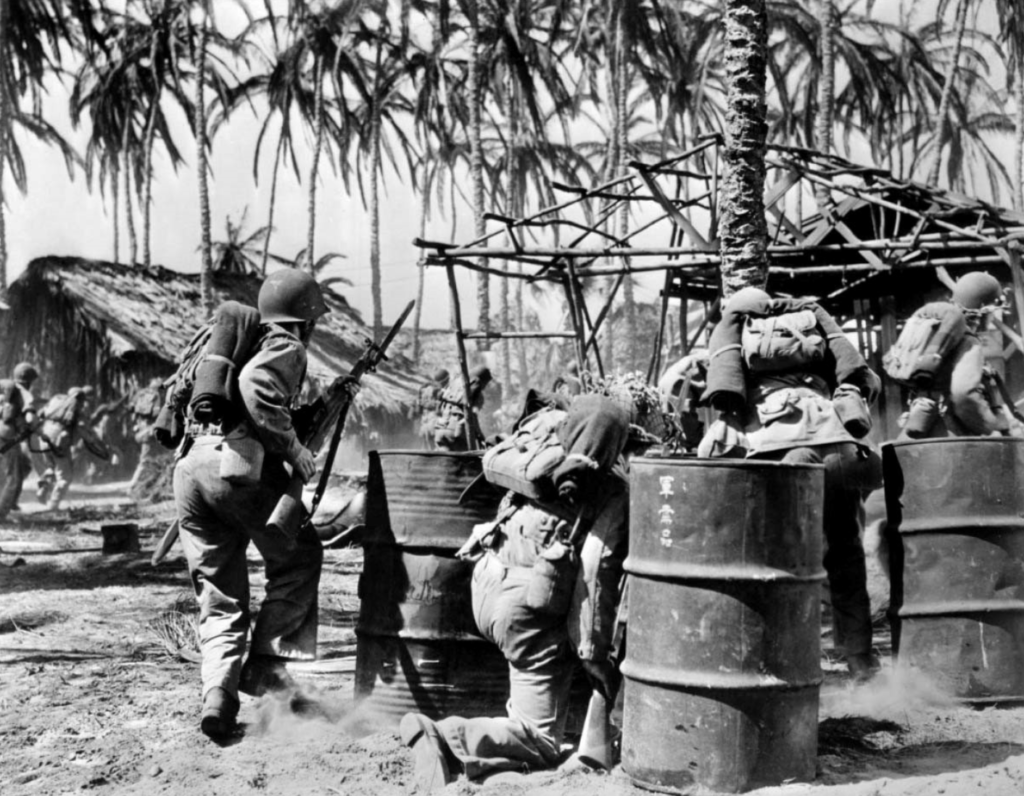
At Tulagi, the landing by 1st Raider Battalion under Lieutenant Colonel Merritt Edson, and the 2nd Battalion, 5th Marines was not easy as Japanese resistance was stiff and ferocious from the very beginning. Nevertheless, the Marines fought tenaciously and relentlessly for the next 24 hours and by the end of the day of August 9, they had crushed the last pockets of resistance. The most vicious and brutal part of the Battle of Tulagi was the assault on Hill 280, which took place on August 8. After pounding the Japanese positions on top of Hill 280 with mortar fire, the Americans assaulted the last positions, using improvised explosive charges to kill the Japanese defenders. Marine casualties were 122 killed, 200 wounded at Tulagi. The Japanese suffered 863 killed, 20 taken prisoner – most of who were Korean laborers.

The assault on Gavutu by the U.S. Marine 1st Parachute Battalion’s 397 men. As the American naval bombardment had damaged the seaplane ramp, the Marines were forced to land in a more exposed location on a nearby small beach and as soon as they set foot on the beach Japanese machine guns opened fire on them inflicting heavy casualties, killing or wounding one in ten of the landing Marines as they scrambled inland in an attempt to get out of the deadly fire. Moving inland, Marines methodically blew up the caves, explosives destroying most of them. The few surviving Japanese conducted isolated attacks throughout the night, with hand to hand engagements occurring. By noon on August 9, all Japanese resistance had been crushed. In the battle for Gavutu and Tanambogo, 476 Japanese defenders and 70 U.S. Marines or naval personnel were killed in action.
This was a sign of what was to come during the six month Battle of Guadalcanal.
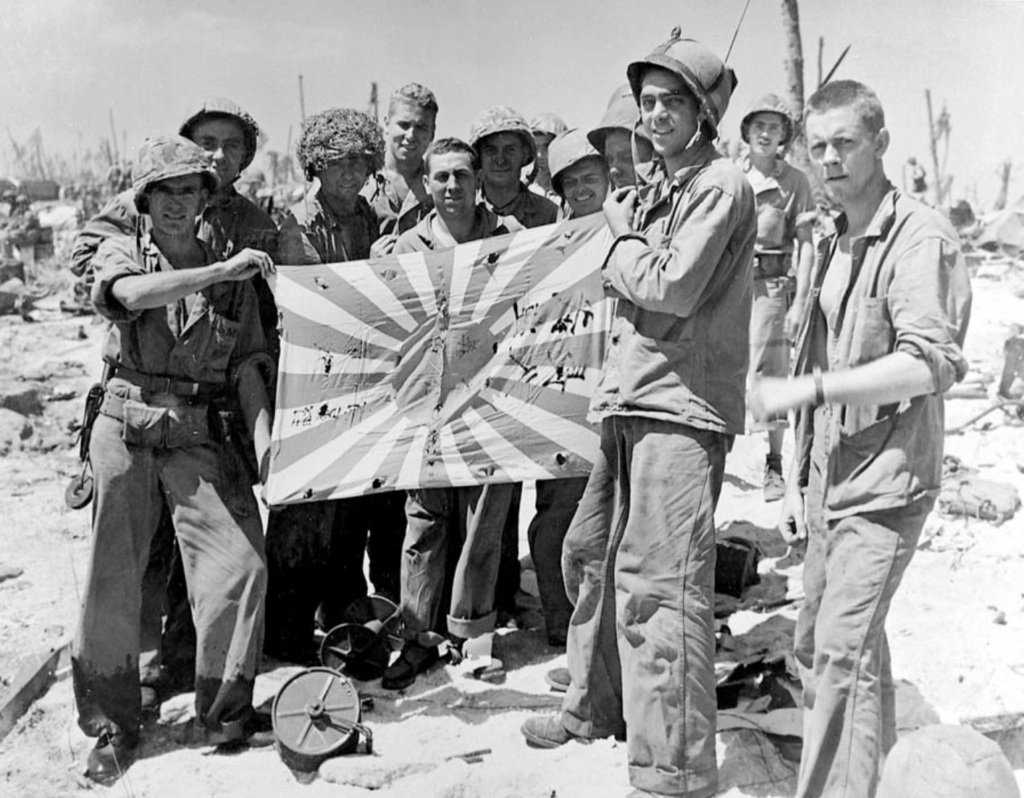
The Americans arrived at the Japanese airfield under construction on Guadalcanal late on August 8th. Once again, there were no Japanese; they had fled into the jungle. But the Japanese Navy still controlled the sea around Guadalcanal and during the night of August 8/9, a Japanese cruiser force attacked the Allied naval force and forced it to withdraw, leaving the Marines on their own as Japanese ships and aircraft fired on them. In spite of all the firepower coming their way, U.S. Navy Seabees began finishing the airfield begun by the Japanese. It was then named Henderson Field after a Marine aviator killed in combat during the Battle of Midway. Marine, Army, Navy and allied aircraft operated from Henderson Field within a couple of days. Each day they took off bombing and strafing known Japanese positions throughout the island and attacking any Japanese ships that ventured into the vicinity.
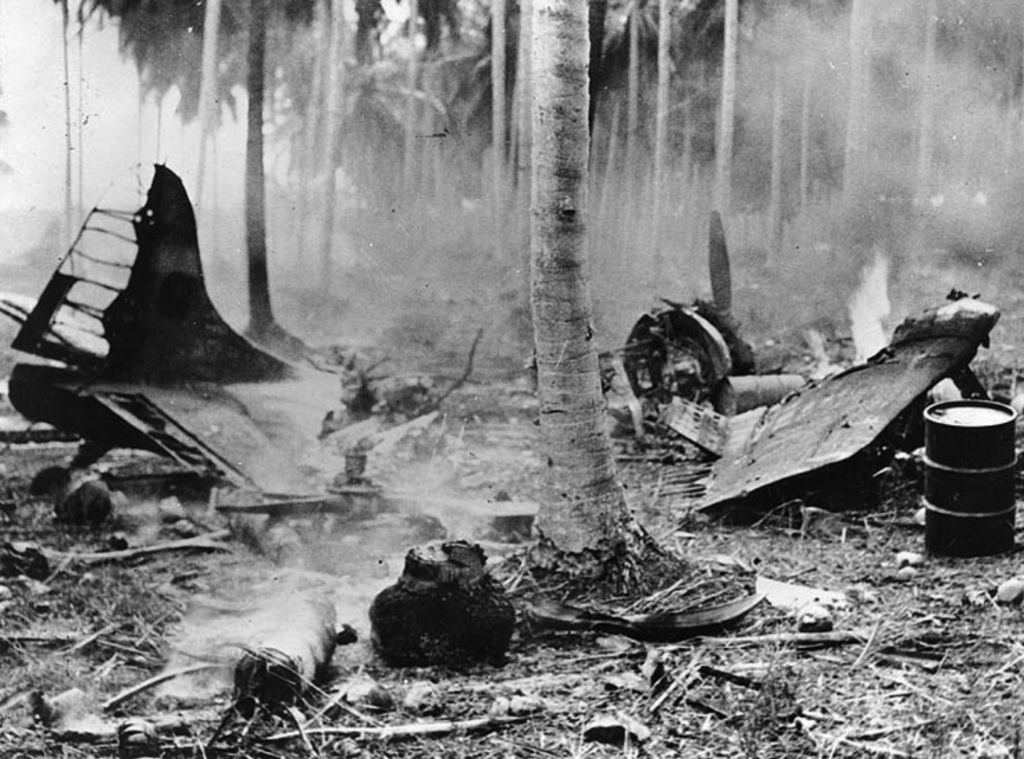
The photo shows Navy plane that was destroyed by Japanese fire.
During this time, the Marine began patrolling in the Matanikau Valley, engaging in frequent battles and scrimmages with the Japanese with mixed results. In response, Gen. Harukichi Hyakutake, commander of the Japanese 17th Army at Rabaul, began shipping more troops to the island hoping to turn the tide of battle in their favor.
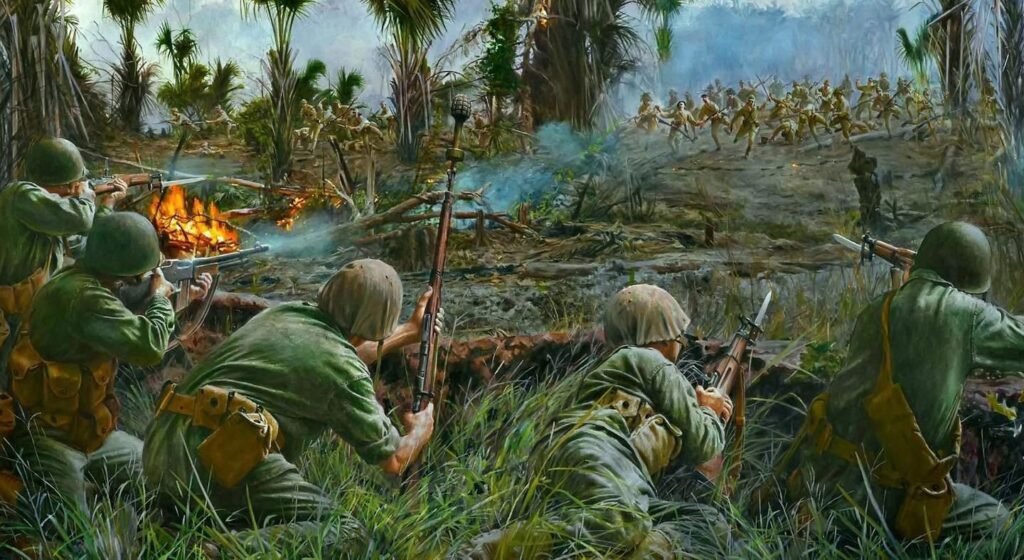
The first of these, under Colonel Kiyonao Ichiki, landed at Taivu Point on August 19, 1942. Advancing west, his forces attacked the Marines early on August 21 and were repulsed with heavy losses at the Battle of the Tenaru. The Japanese directed additional reinforcements to the area which resulted in the Battle of the Eastern Solomons. Though the battle was a draw, it forced Rear Admiral Raizo Tanaka‘s reinforcement convoys to turn back. Col. Ichiki, whose shame of defeat was too unbearable, committed Hari Kari to restore his honor in death.
Having built up sufficient strength, Major General Kiyotake Kawaguchi attacked the Allied position at Lunga Ridge, south of Henderson Field, on September 12, 1942. In two nights of brutal fighting, the Marines held, forcing the Japanese to retreat.
By early October the Marines inflicted heavy losses on the Japanese and delayed their next offensive against the Lunga perimeter.
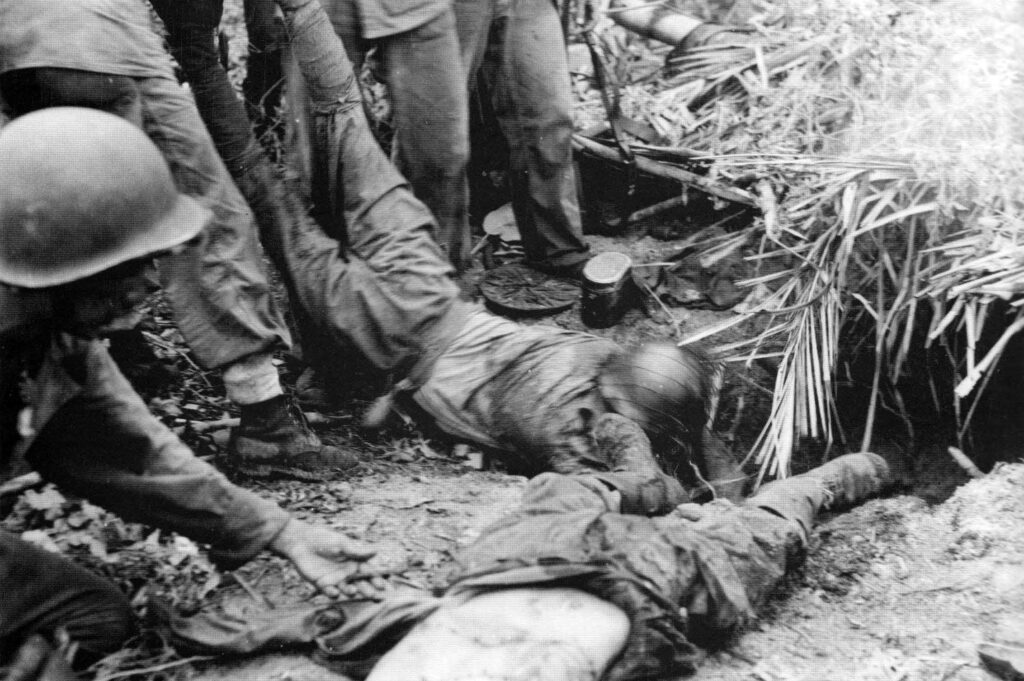
On October 13, 1942, the 164th Infantry, the first Army unit on Guadalcanal, came ashore to reinforce the Marines and took a 6,600-yard sector at the east end of the American perimeter. On November 4th, they fought 1,500 Japanese troops that landed on the beach at Koli Point. They killed half the Japanese force. The rest escaped into the jungle.
The ground fighting was fierce but the Allies eventually repelled the Japanese and secured the six miles between the airbase and the shore. However, the Japanese still had a naval advantage and the sea battles were not going well for the Allies.

In mid-November, the U.S. Navy fought the Japanese when they attempted a major reinforcement of troops. In this four-day battle, the U.S. Navy foiled the reinforcement effort, and only 4,000 of 10,000 Japanese troops reached land.
After this battle, the American troops pushed on in an effort to take Mount Austen. Thrashing through the jungle toward Mount Austen, they faced heavy fire from Japanese troops. Upon reaching Mount Austen they began their two-pronged attack on the stronghold at Gifu, securing most of the Gifu area and the west slopes of the mountain. Overall, between 400 and 500 Japanese troops died, and over 100 American troops died in the effort to take Mount Austen.

By the end of January 1943, the Americans had taken the Japanese headquarters at Kokumbona on the island. With their headquarters fallen and numerous Japanese soldiers taking refuge in the island’s jungle, Japan effected a stealth evacuation of the island, completed on February 8, 1943.
Battle of Midway and Guadalcanal Lead to Allied Victory
While fighting was vicious during the six months of the Battle of Guadalcanal, Japan suffered the most casualties. Of a total of 31,400 soldiers deployed, the Japanese lost 14,800 soldiers killed from fighting and another 9,000 soldiers from tropical diseases. About 1,000 Japanese soldiers were taken prisoner. But by far the most significant loss for the Japanese was the decimation of their elite group of naval aviators.
The United States lost 1,592 troops killed of the almost 60,000 soldiers deployed, and 4,183 were wounded. Thousands more were disabled by tropical diseases like malaria.
Japan after Guadalcanal no longer had a realistic hope of withstanding the counteroffensive of an increasingly powerful the United States funneled to the island as a series of land and sea clashes unfolded, and both sides endured heavy losses to their warship contingents.
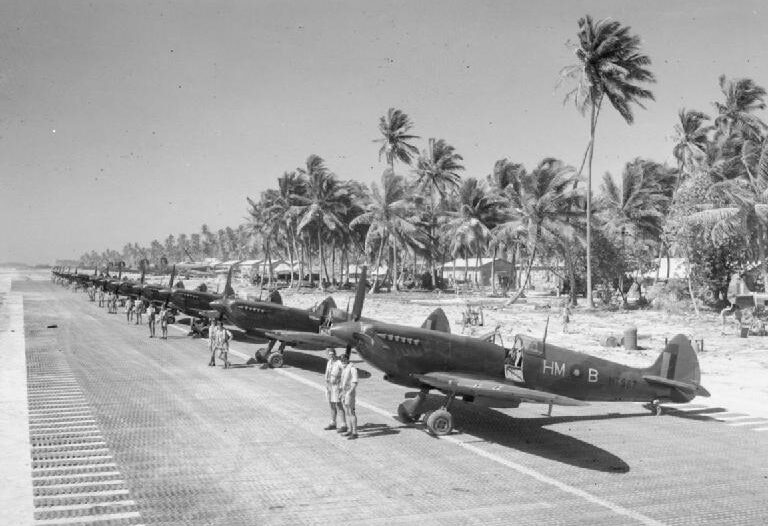
Operationally, the Battle of Guadalcanal was notable for the interrelationship of a series of complex engagements on the ground, at sea, and in the air. Tactically, what stood out was the resolve and resourcefulness of the U.S. Marines, whose tenacious defense of Henderson Field enabled the Americans to secure air superiority.
Strategically, the Allied victory at this battle ended Japanese air and naval superiority in the Pacific and was the first step in what became an unrelenting march against the Japanese.
Although many bitter battles were still to be fought before the end of the war in August 1945, the Battle of Midway and Guadalcanal became major turning points in the war as it stopped Japanese expansion and opened the way for U.S. victory in the South Pacific.
As for Guadalcanal and Tulagi, they were developed into major bases supporting the Allied advance further up the Solomon Islands chain. In addition to Henderson Field, two additional fighter runways were constructed at Lunga Point and a bomber airfield was built at Koli Point.
Extensive naval port and logistics facilities were established at Guadalcanal, Tulagi, and Florida. The anchorage around Tulagi became an important advanced base for Allied warships and transport ships supporting the Solomon Islands campaign, culminating in the often bitter fighting of the Bougainville Campaign, which continued until the end of the war in August 1945 when the last Japanese on the island surrendered.
Read About Other Battlefield Chronicles
If you enjoyed learning about the Midway and Guadalcanal, we invite you to read about other battlefield chronicles on our blog. You will also find military book reviews, veterans’ service reflections, famous military units and more on the TogetherWeServed.com blog. If you are a veteran, find your military buddies, view historic boot camp photos, build a printable military service plaque, and more on TogetherWeServed.com today.

However, the conquest of Saipan and Tinian was far more important because it enable the bombing of Japan and the bombers returned to Tinian to refuel and re arm. Including the Enola Gay.
My Dad was in The First Marine Division, The Old Breed. Guadalcanal………My Hero, Numero Uno………See you in Heaven someday………